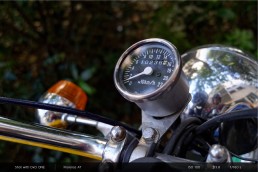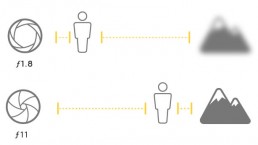Managing depth of field Depth of field
To create a blurry background: open the diaphragm, put more distance between the subject and the background, or get closer to the subject. You can also combine these three techniques simultaneously.
To bring the background into focus: close the diaphragm, move the subject closer to the background, or get farther away from the subject. You can also combine these three techniques simultaneously.
Managing depth of field in an image amounts to determining the focusing distance. Everything in front of that point will appear sharp. Depth of field lets you select a sharp or blurred background.
You can change the depth of field by adjusting the aperture of the diaphragm as well as the distance between the DxO ONE and your subject.
In A (aperture priority) or M (manual) mode, the more you open the diaphragm (up to ƒ/1.8 for the DxO ONE), the shallower the depth of field will be. This will create a gorgeous and artistic background blur, or bokeh, behind the main subject. Note that the blur will be more apparent if the main subject is far away from the background and/or if you’re close to your subject.
The DxO ONE’s Portrait scene mode automatically creates a bokeh effect.
(Photographer Florence AT)
On the other hand, the more you close the diaphragm (between ƒ/8 and ƒ/11), the deeper the depth of field will be, and the sharper the different planes in your image will appear. Use this setting when you’re shooting a landscape or taking a group photo and need all the subjects in the image to be in focus.
The Landscape scene mode also creates a bokeh effect automatically.
(Photographer Florence AT)







 Download page
Download page